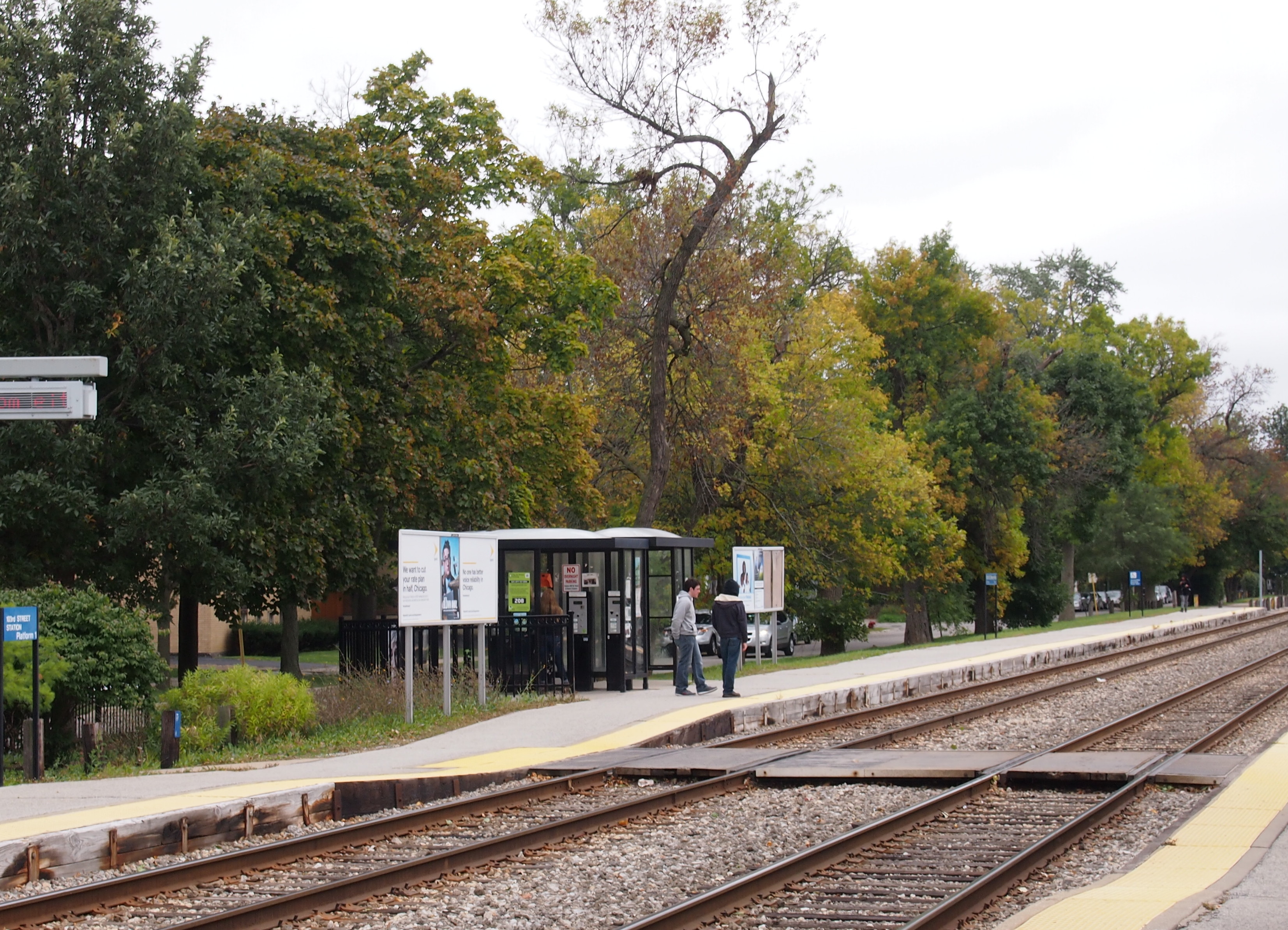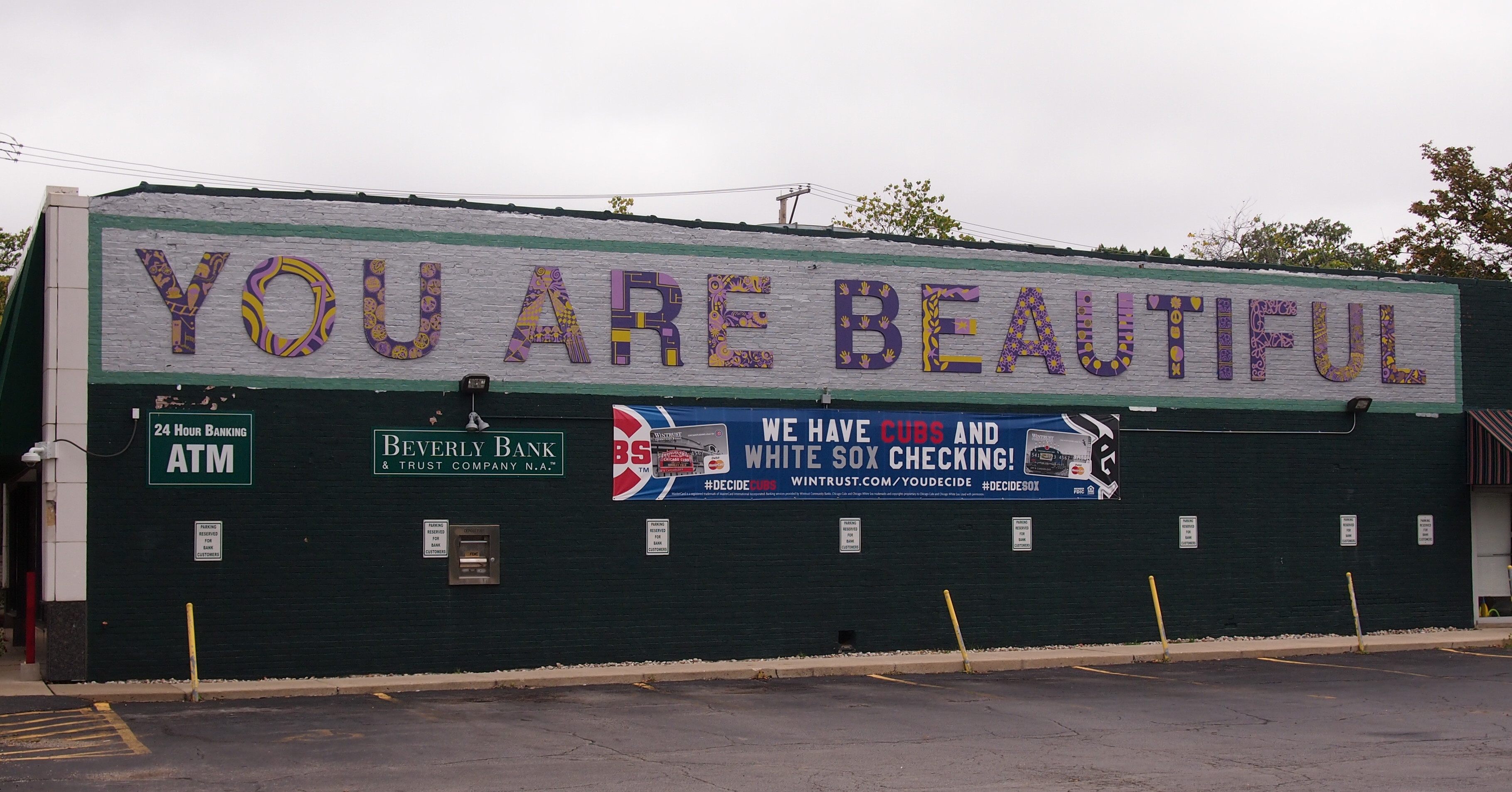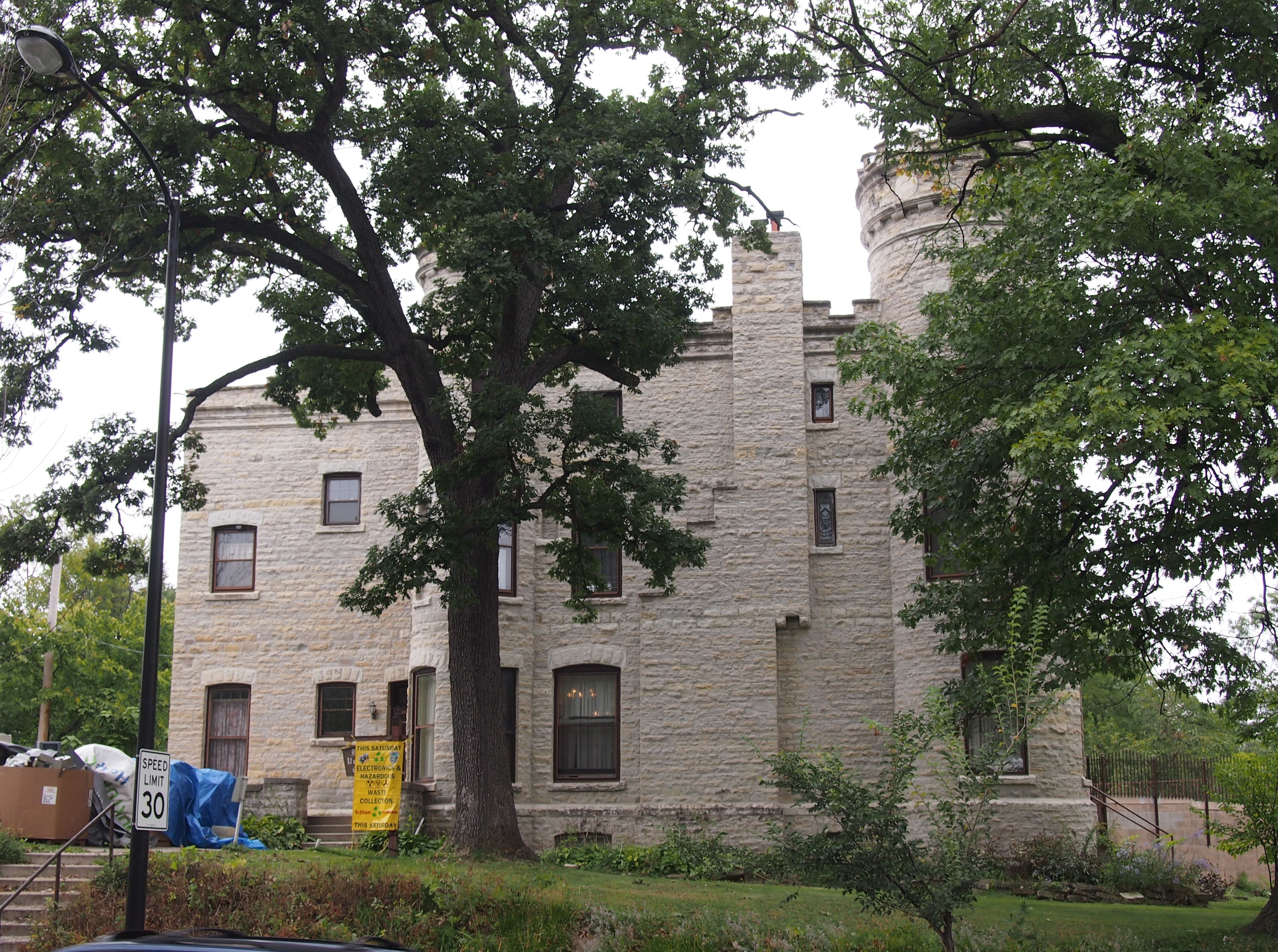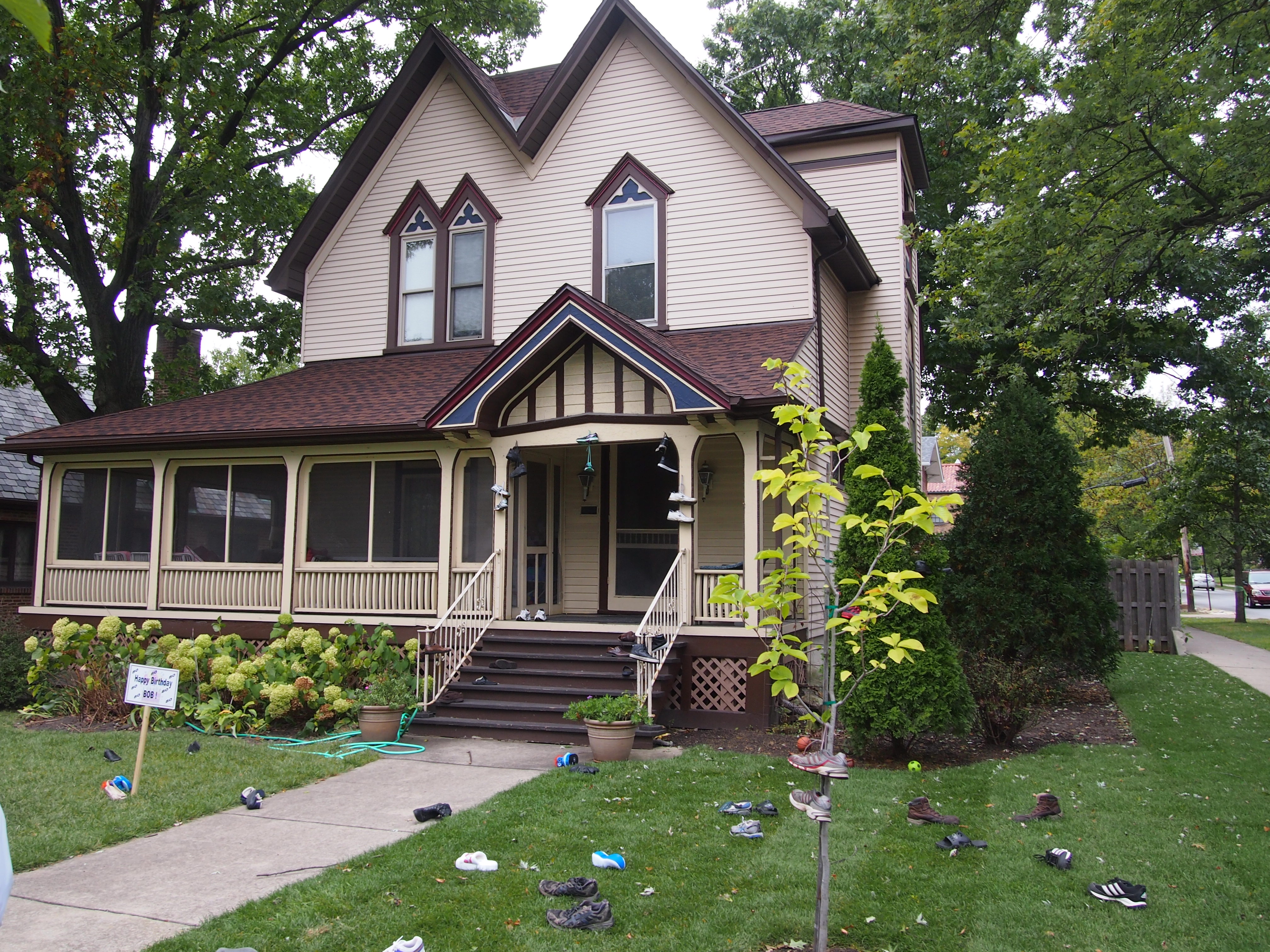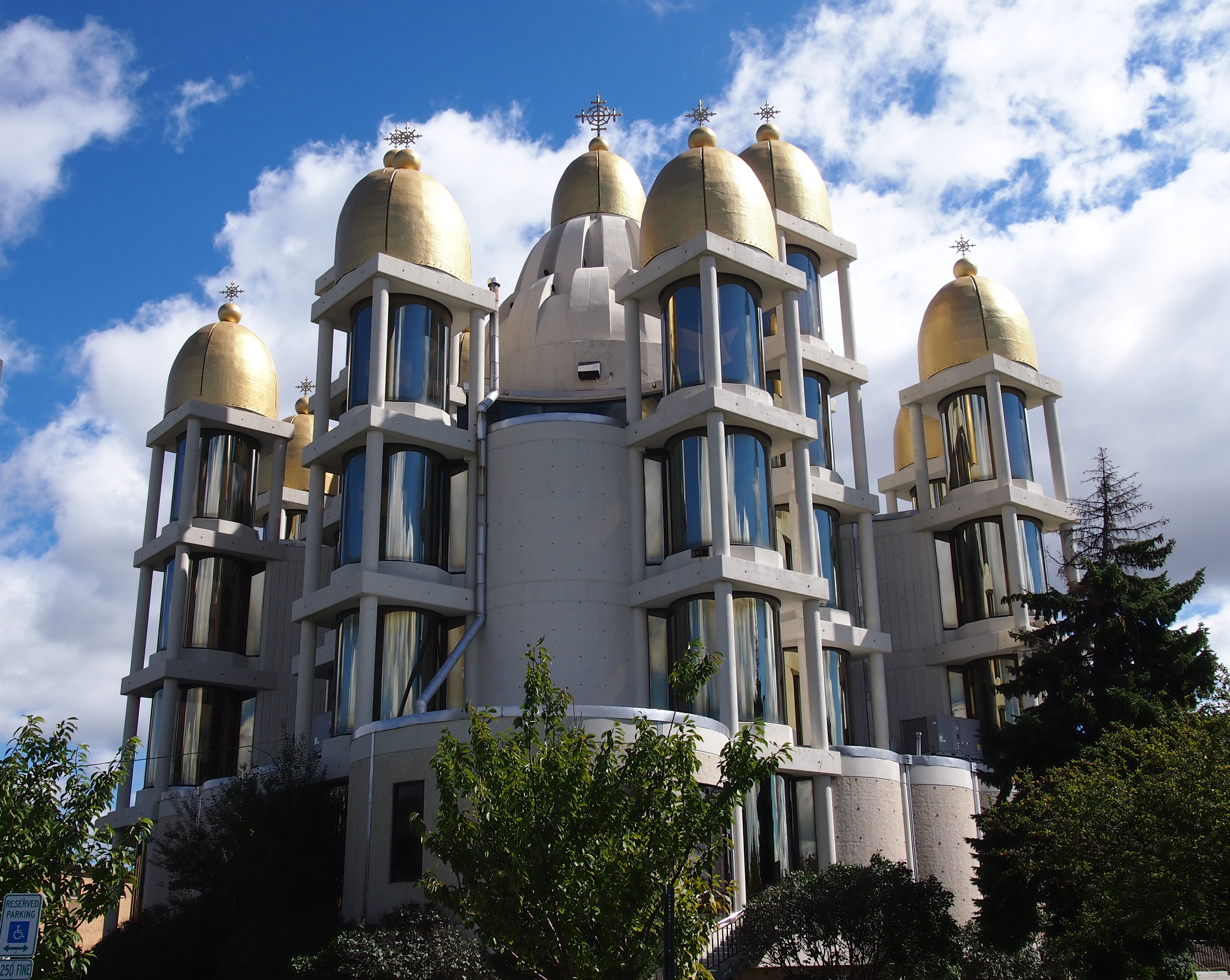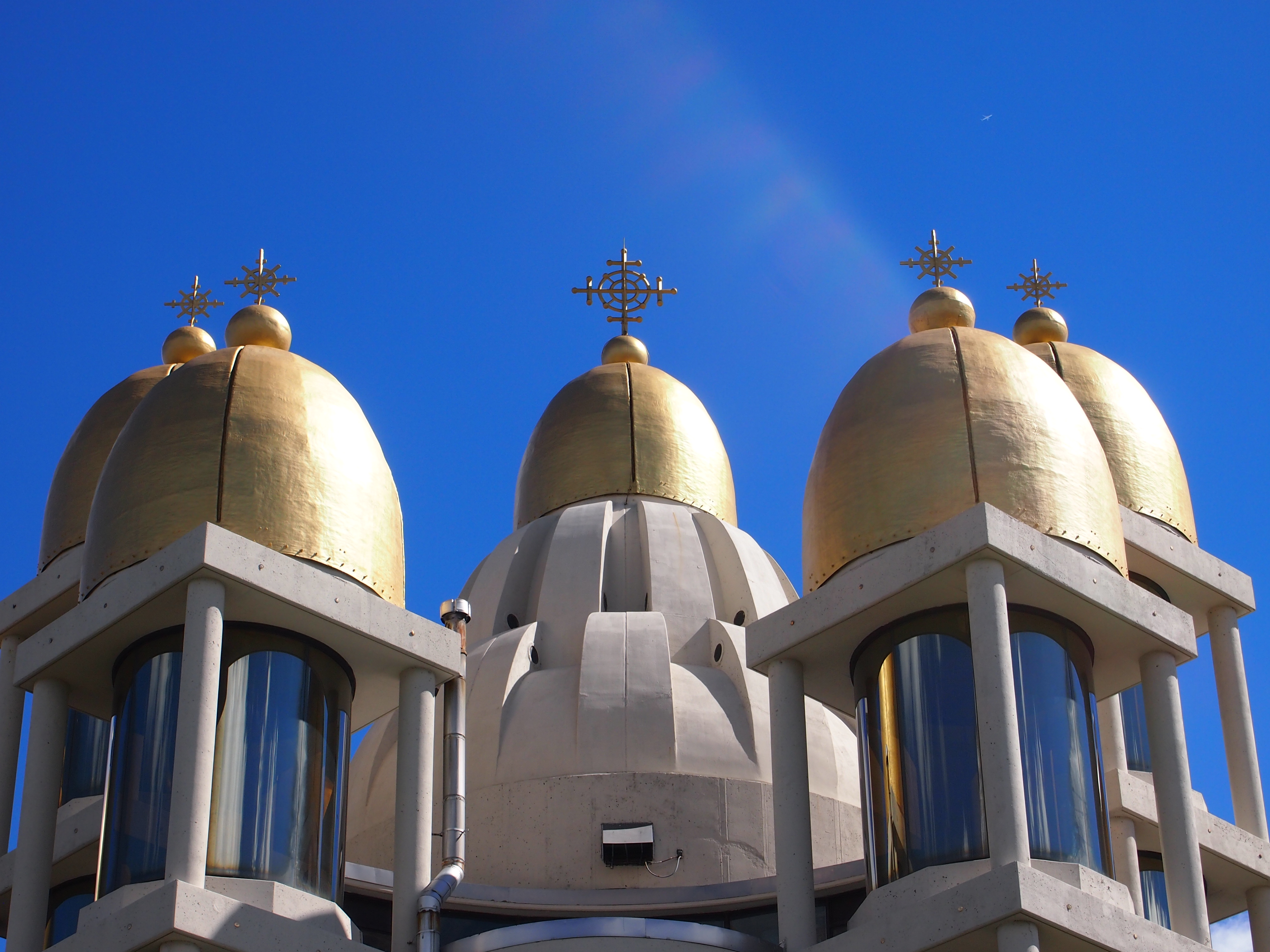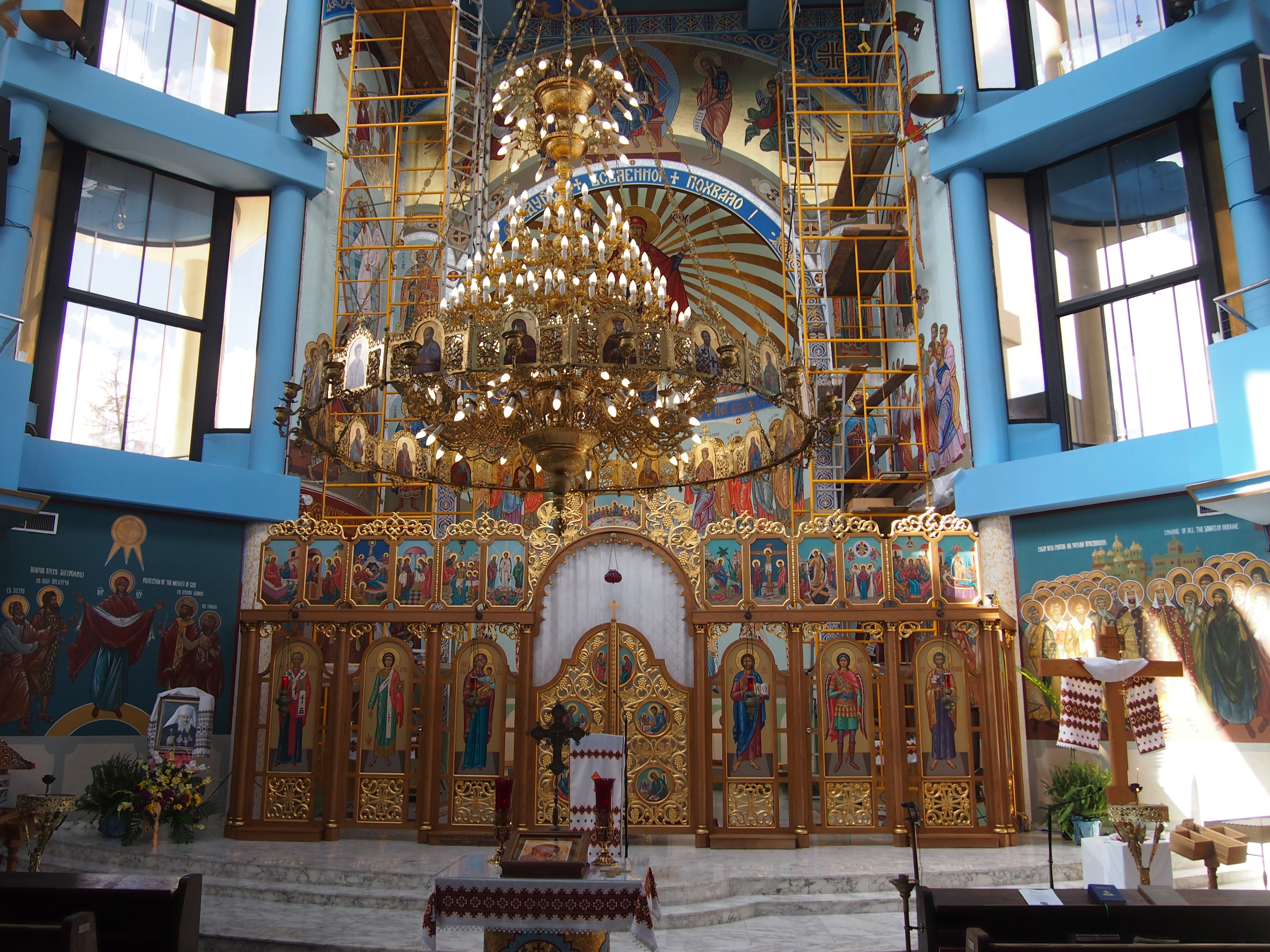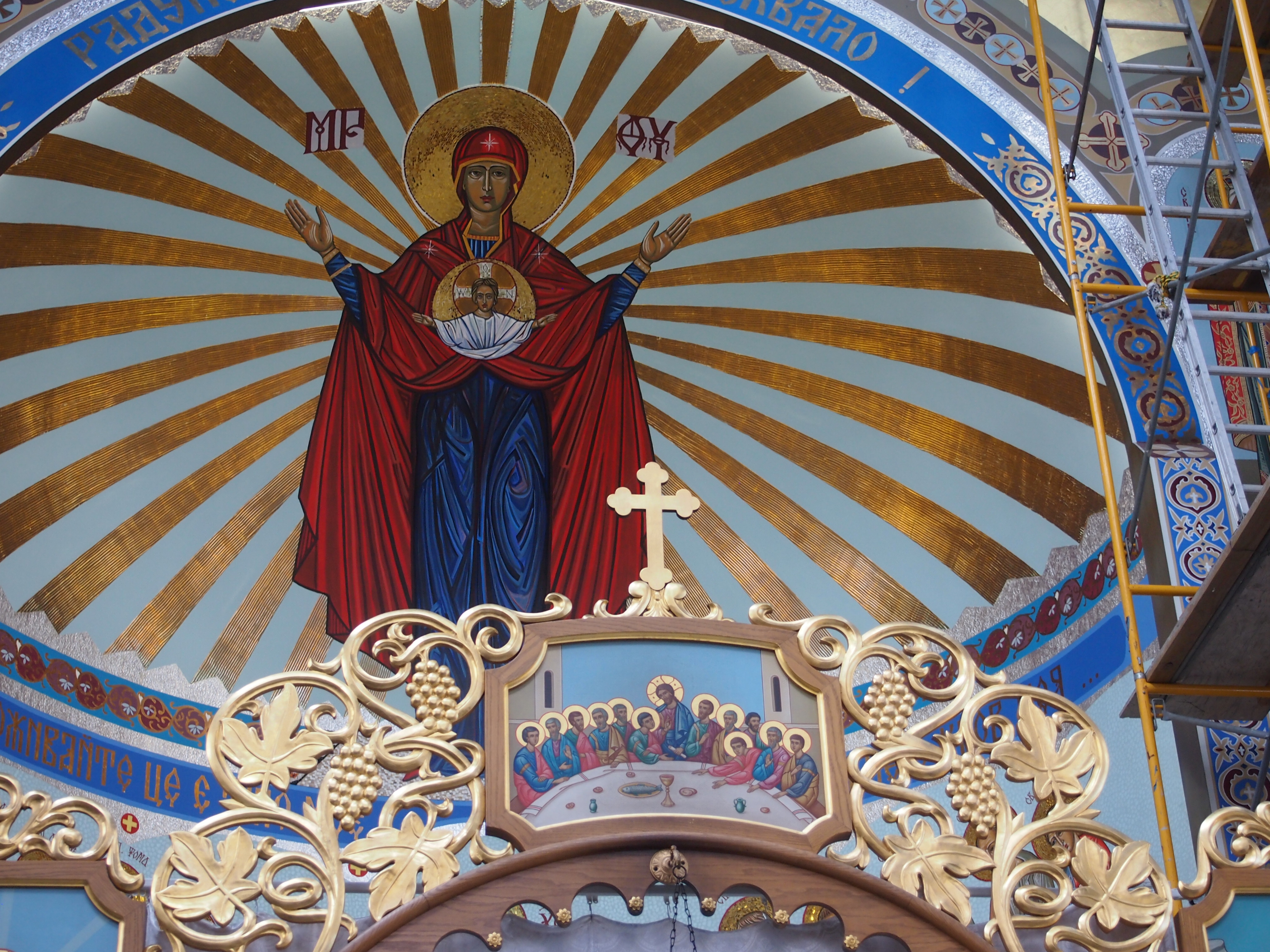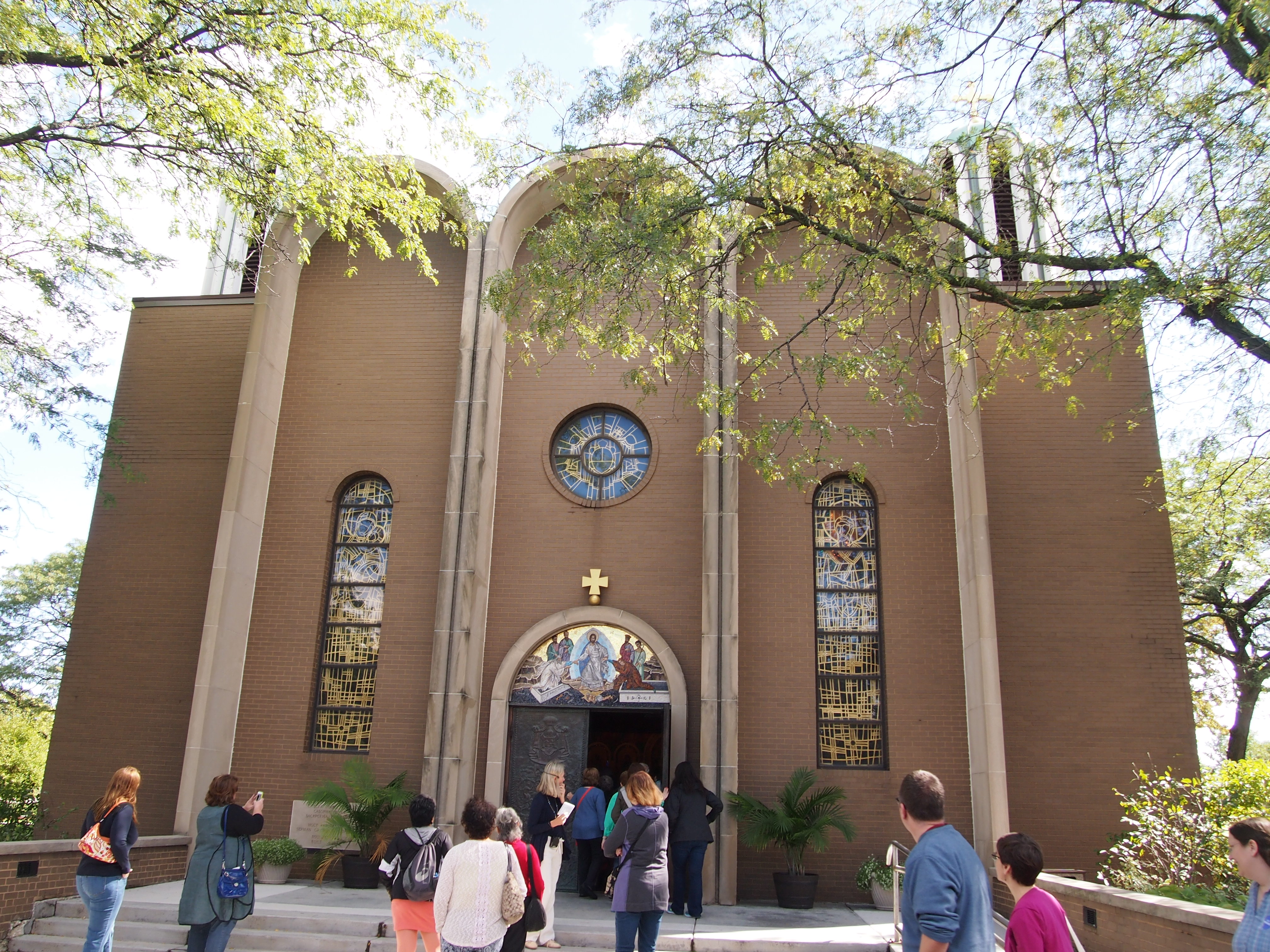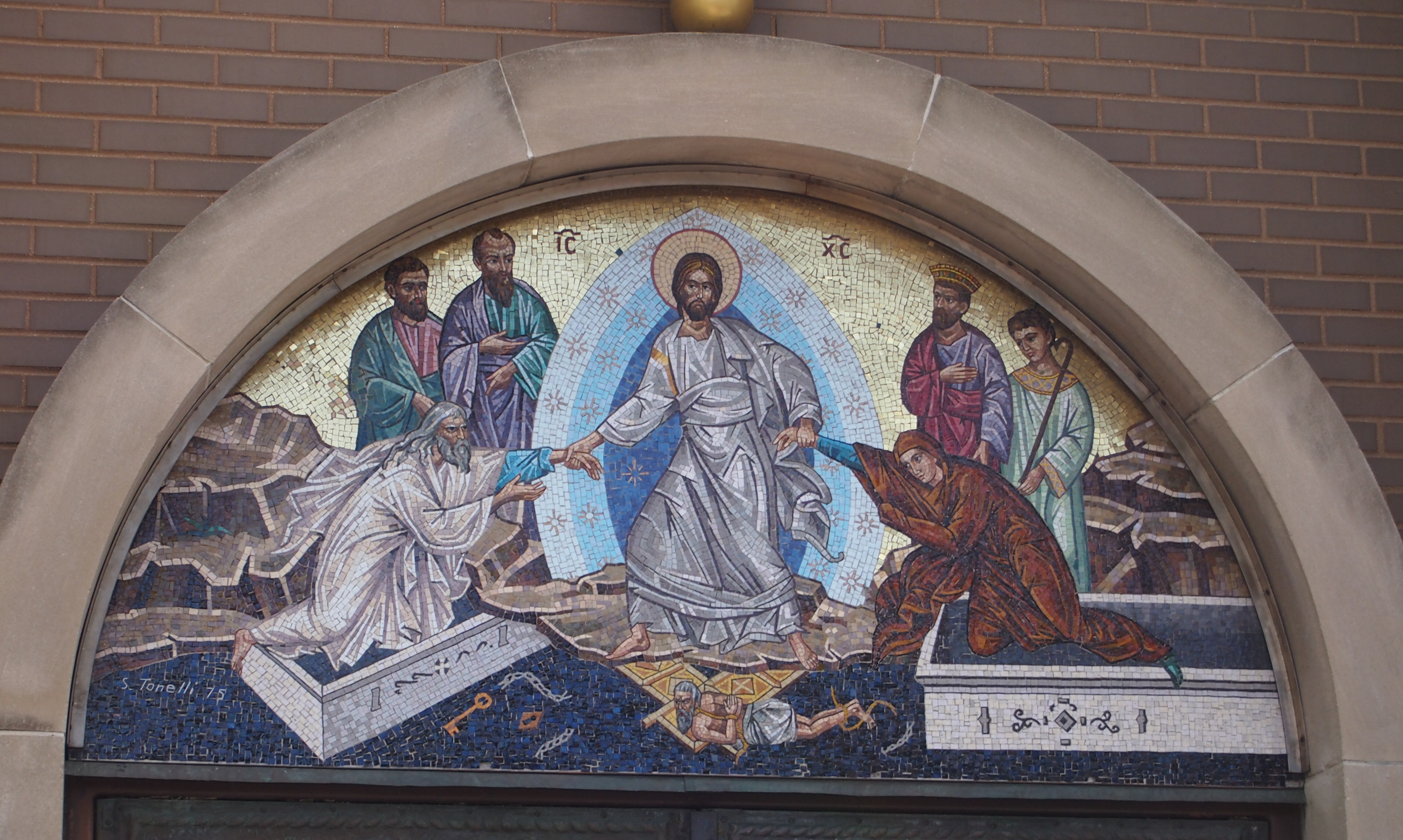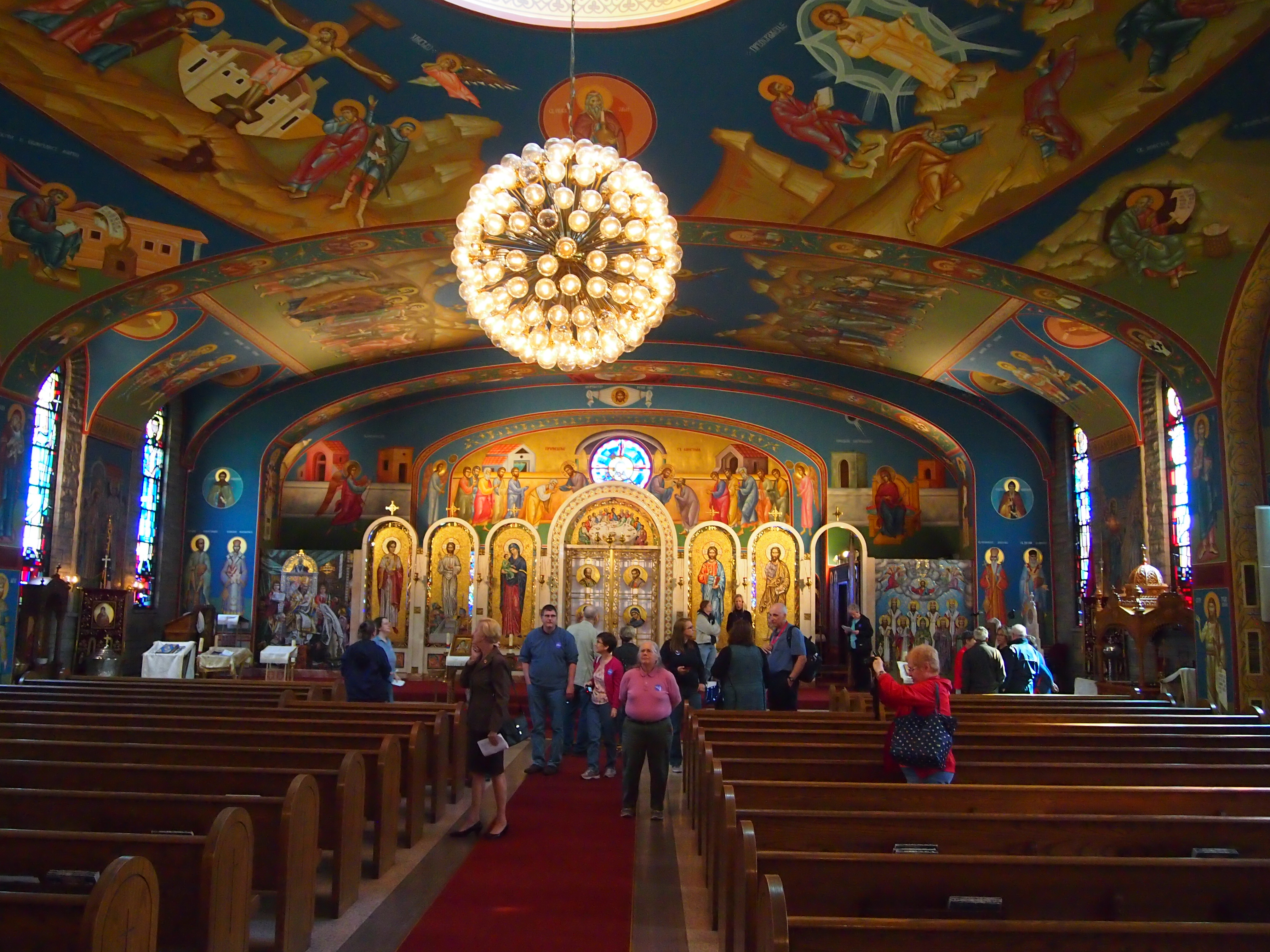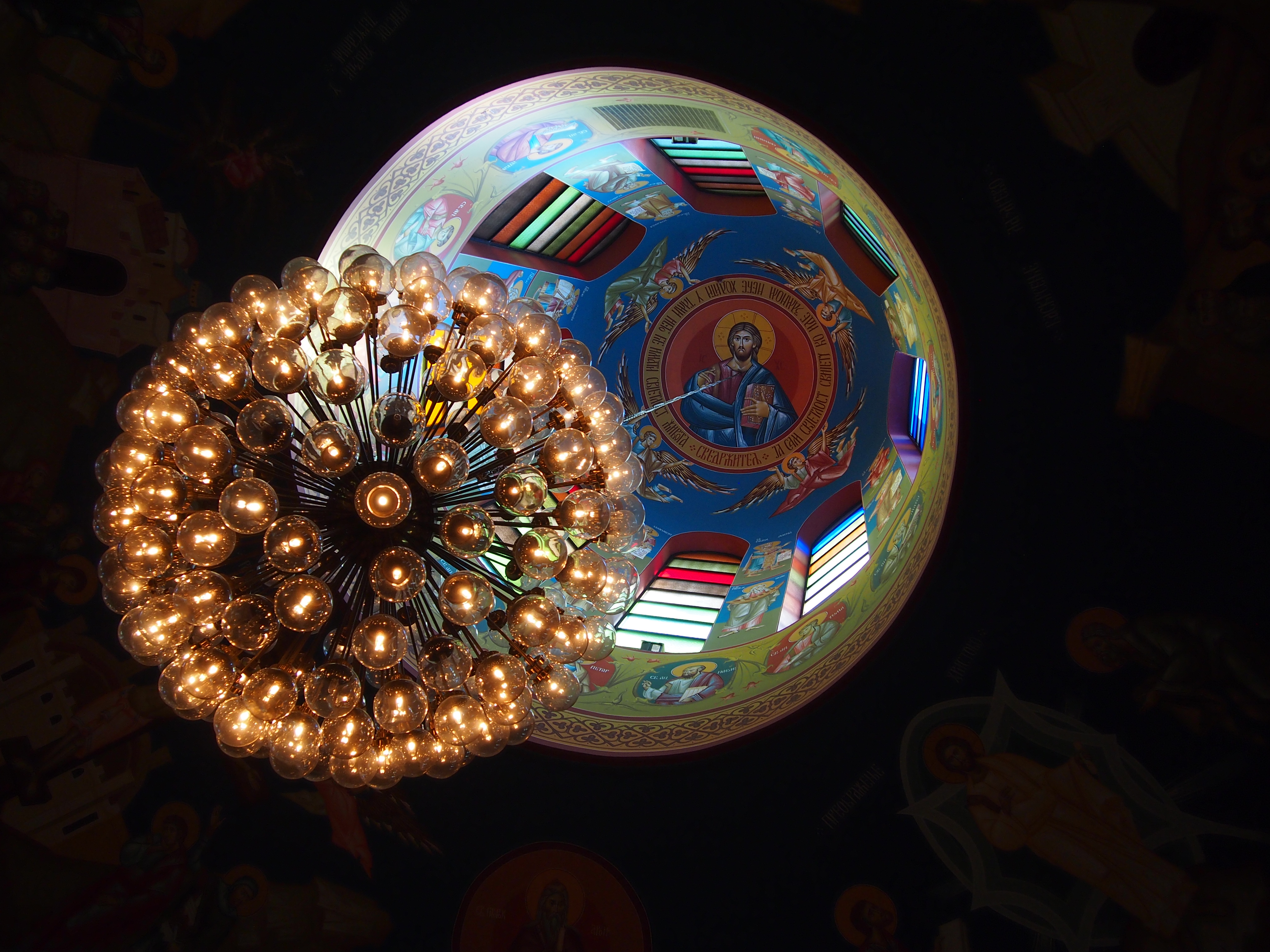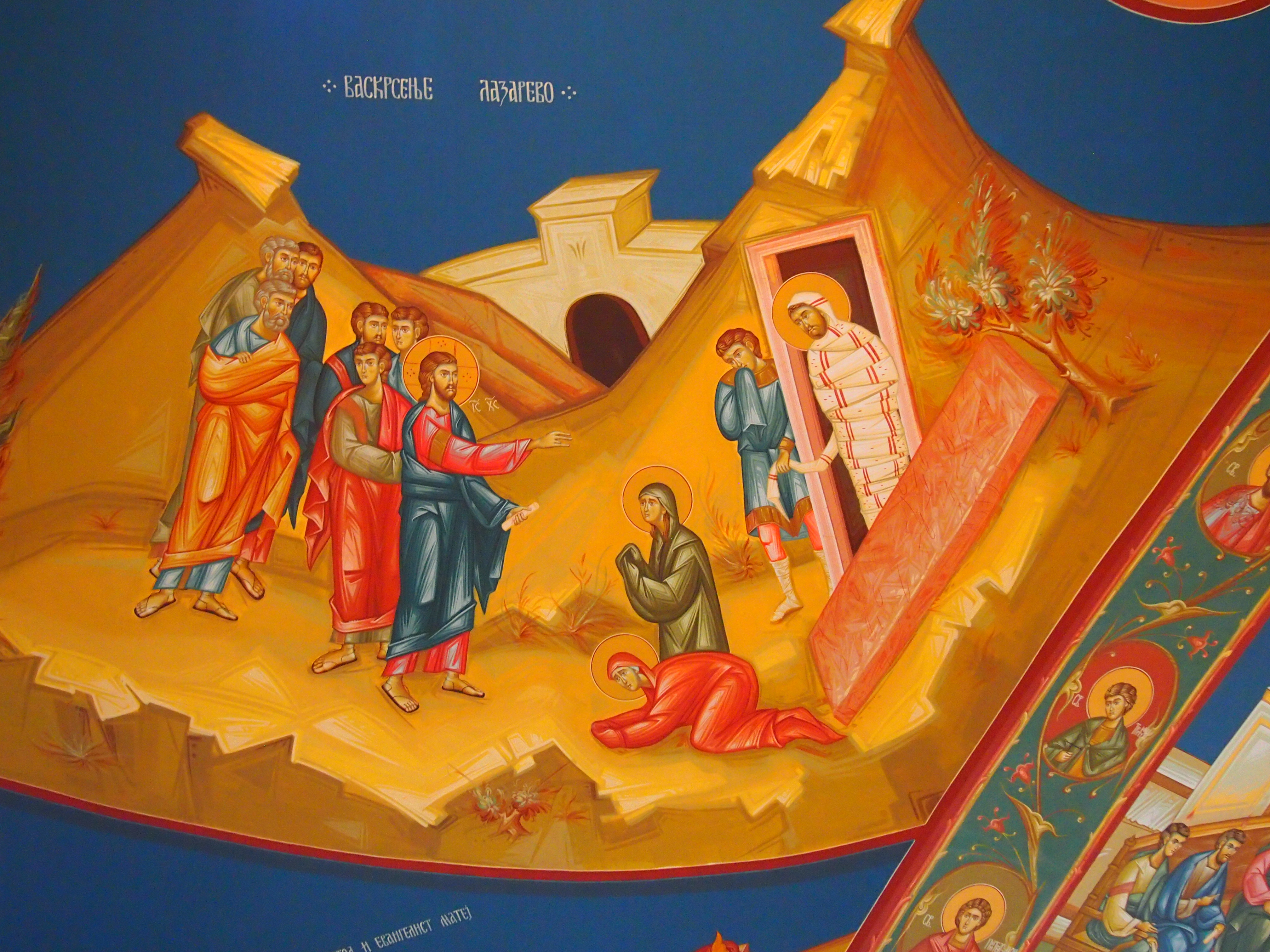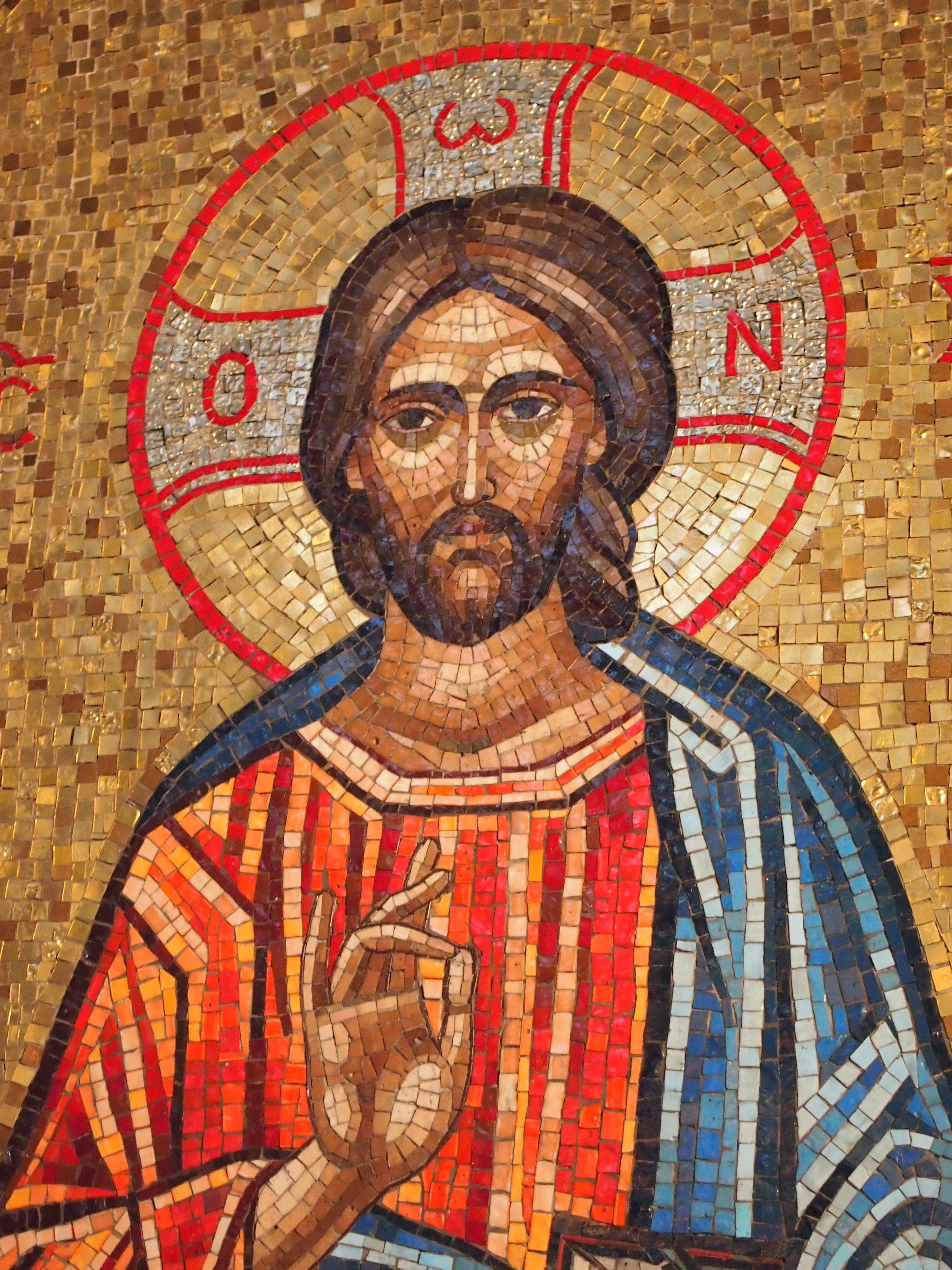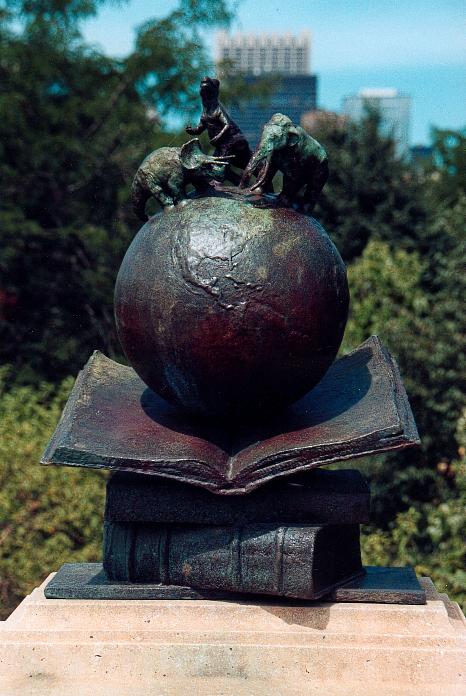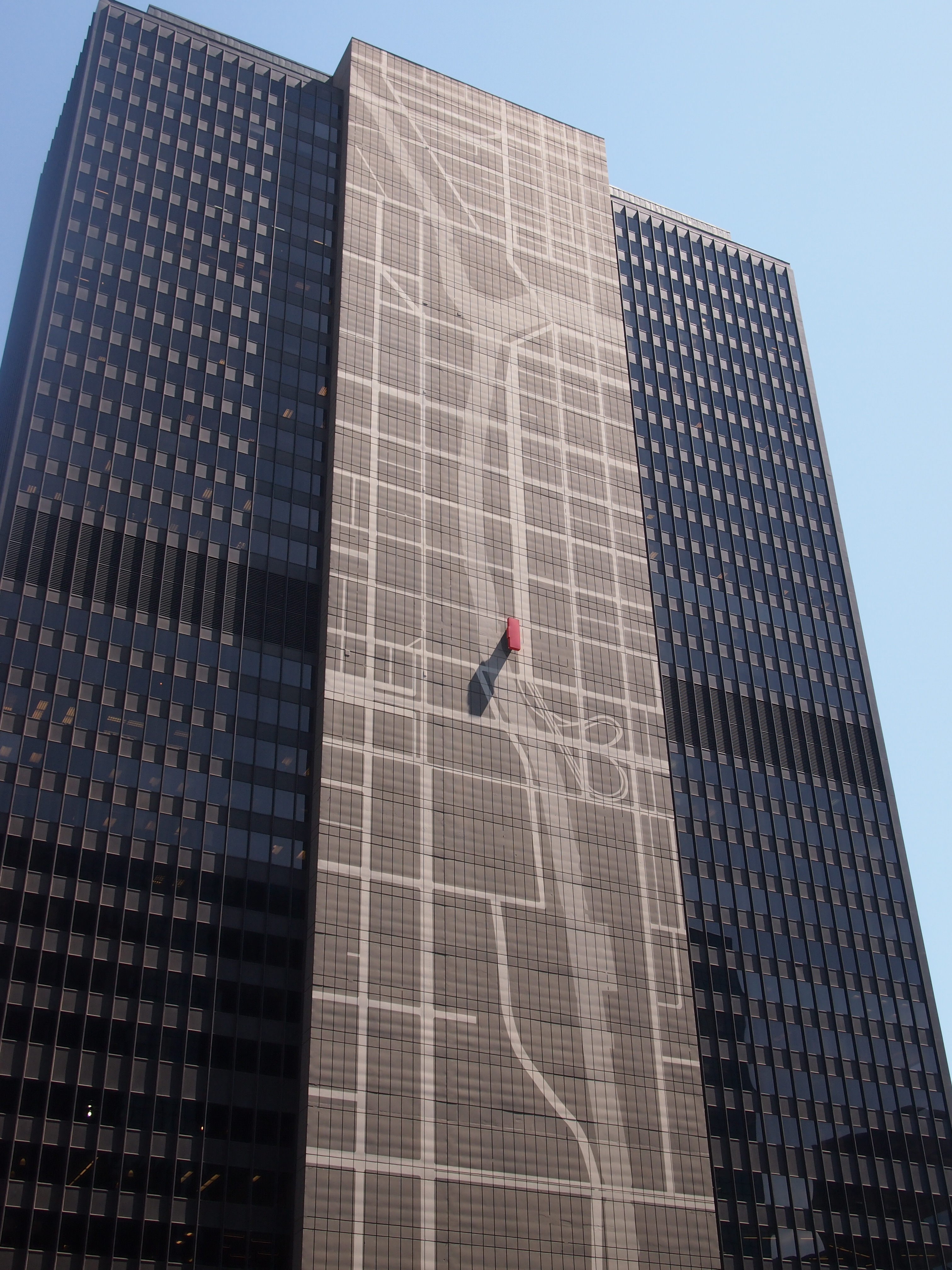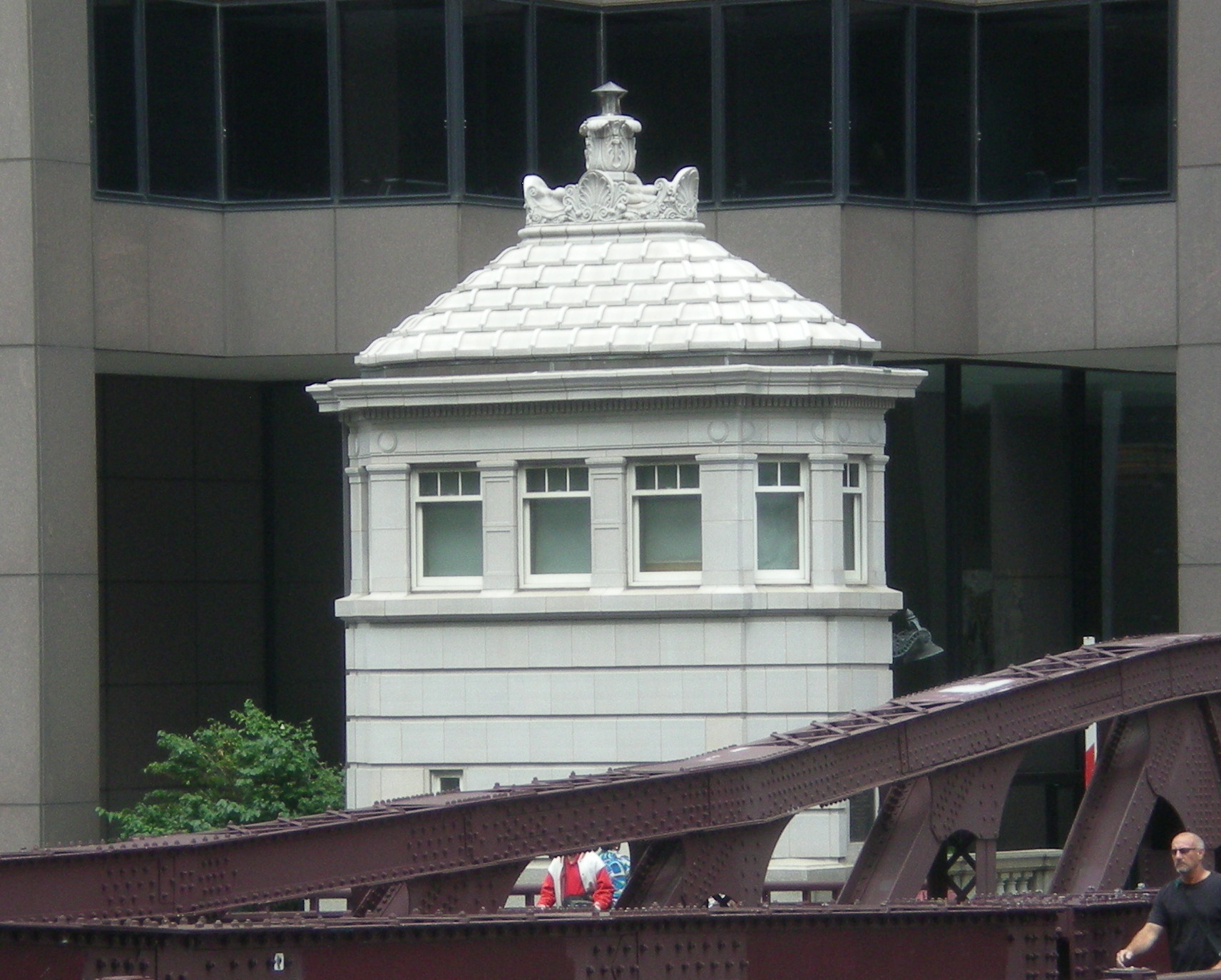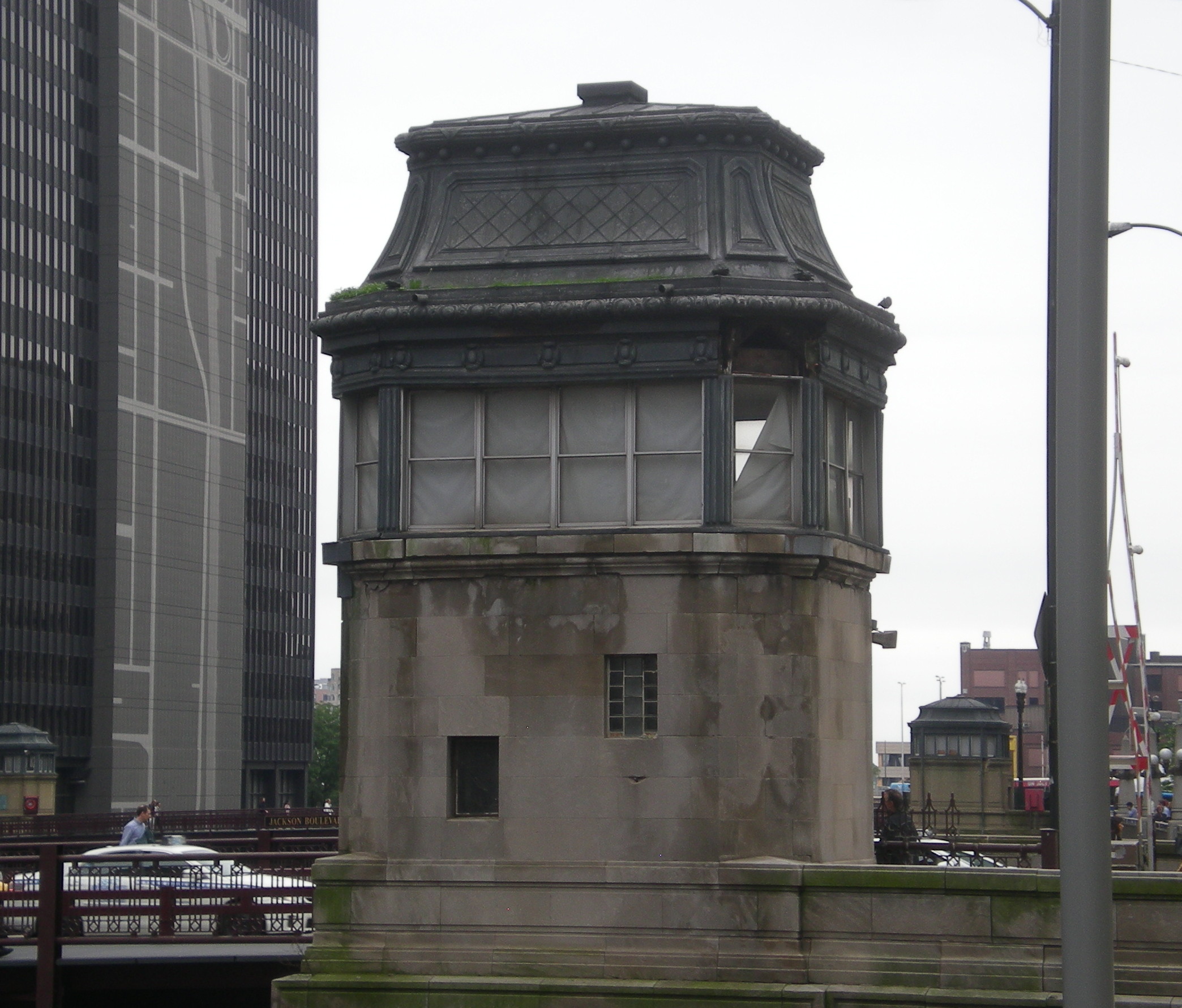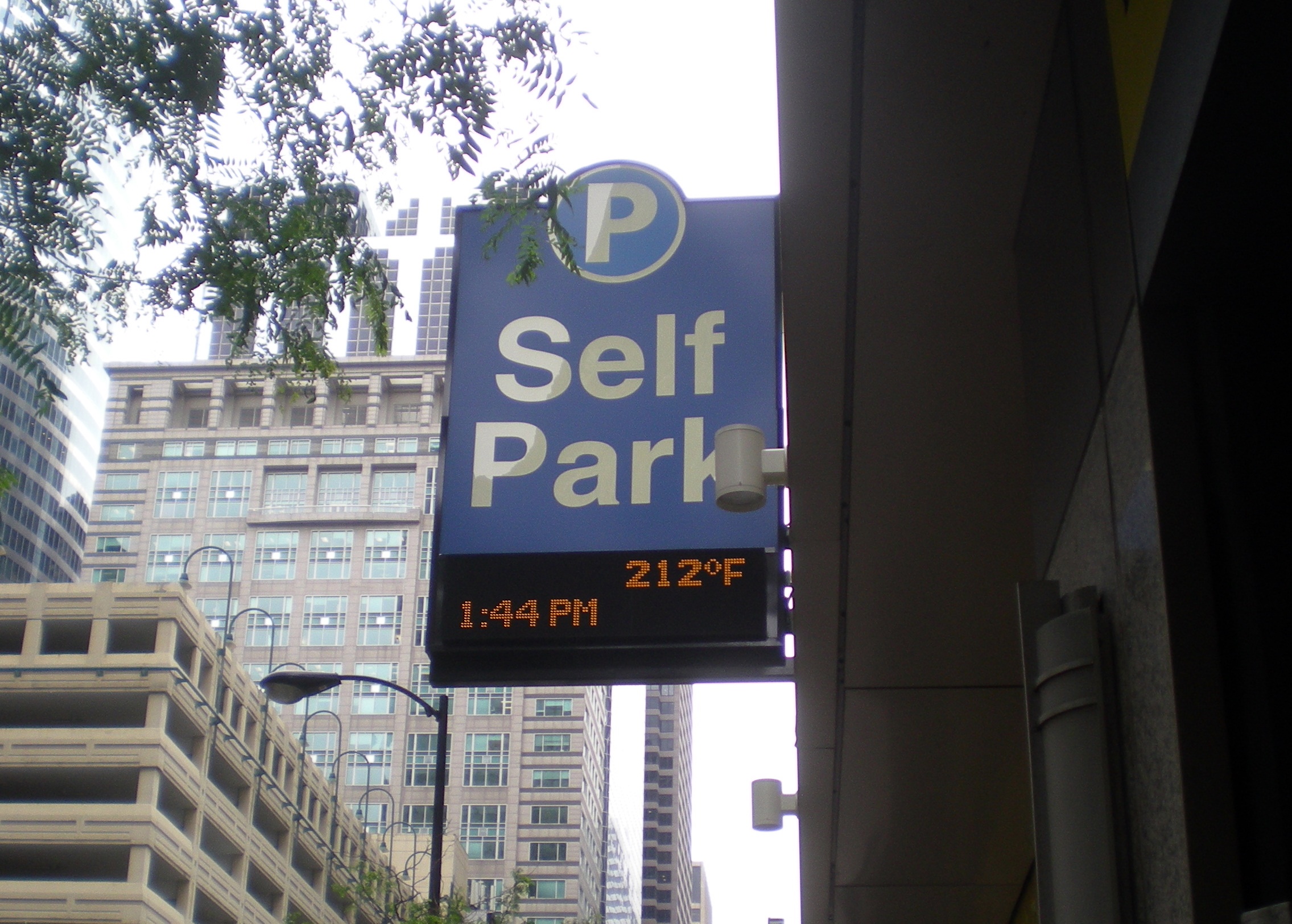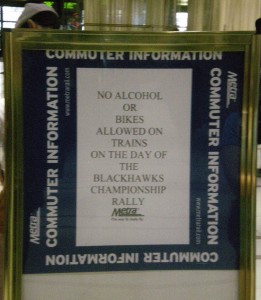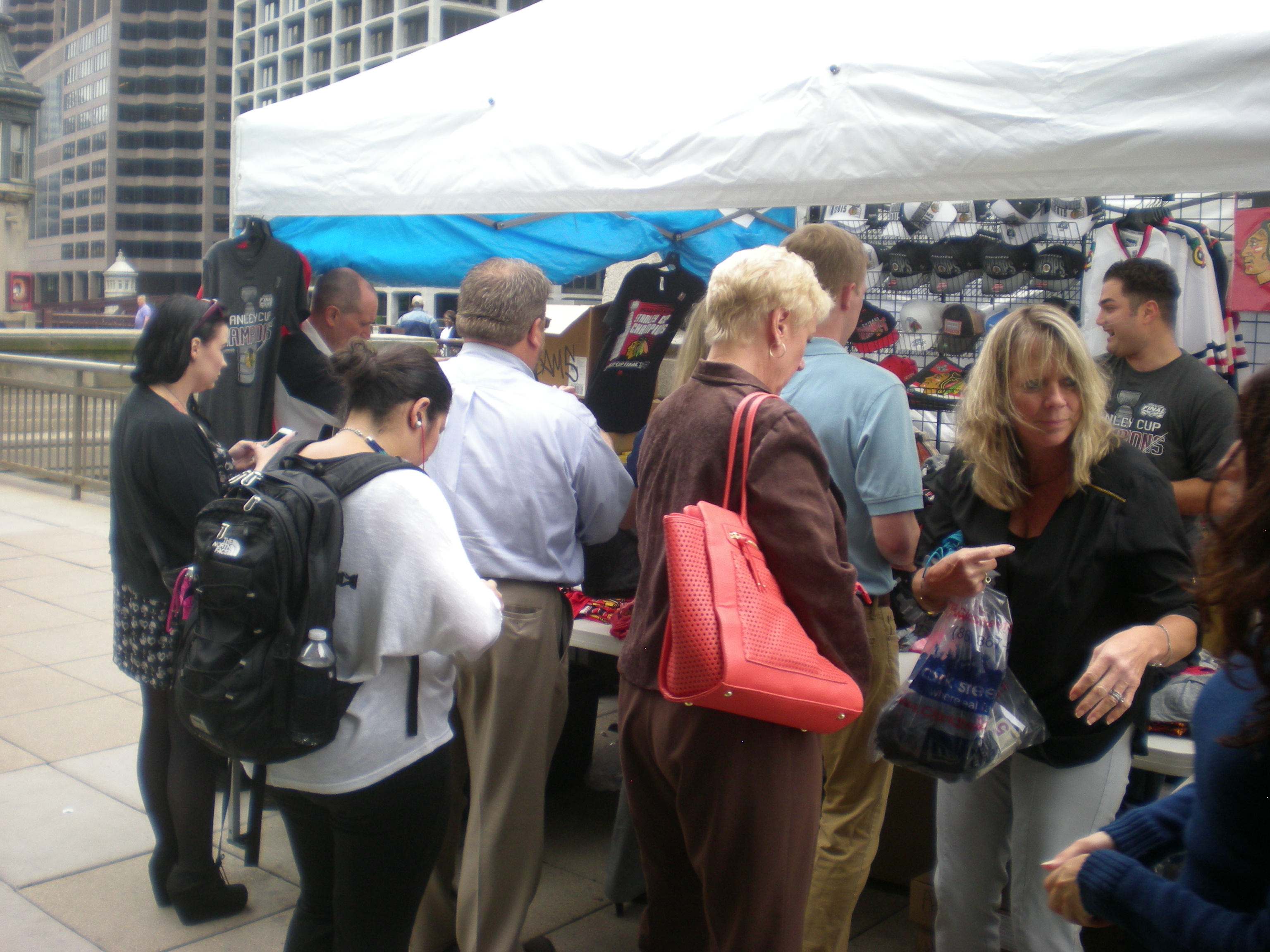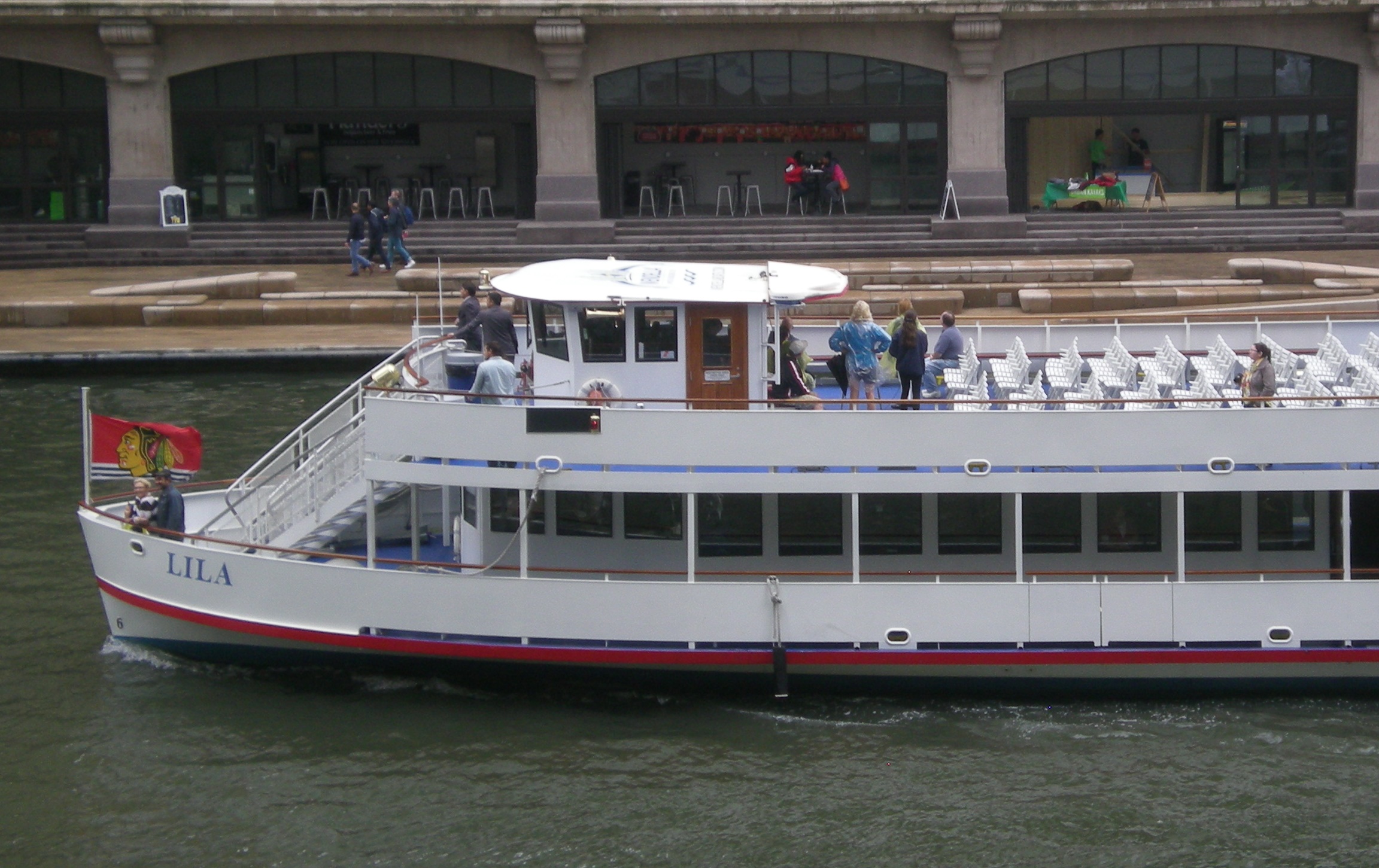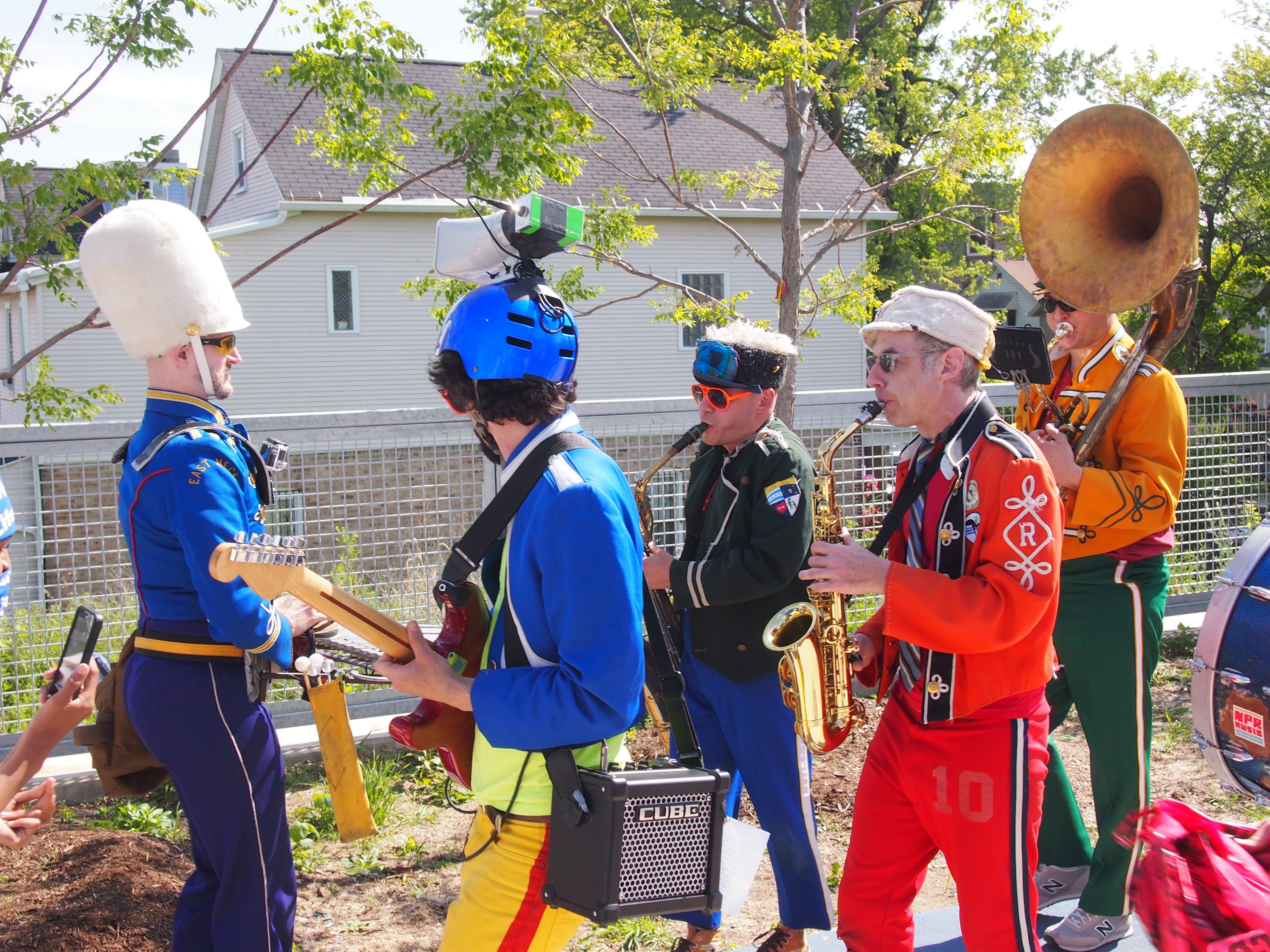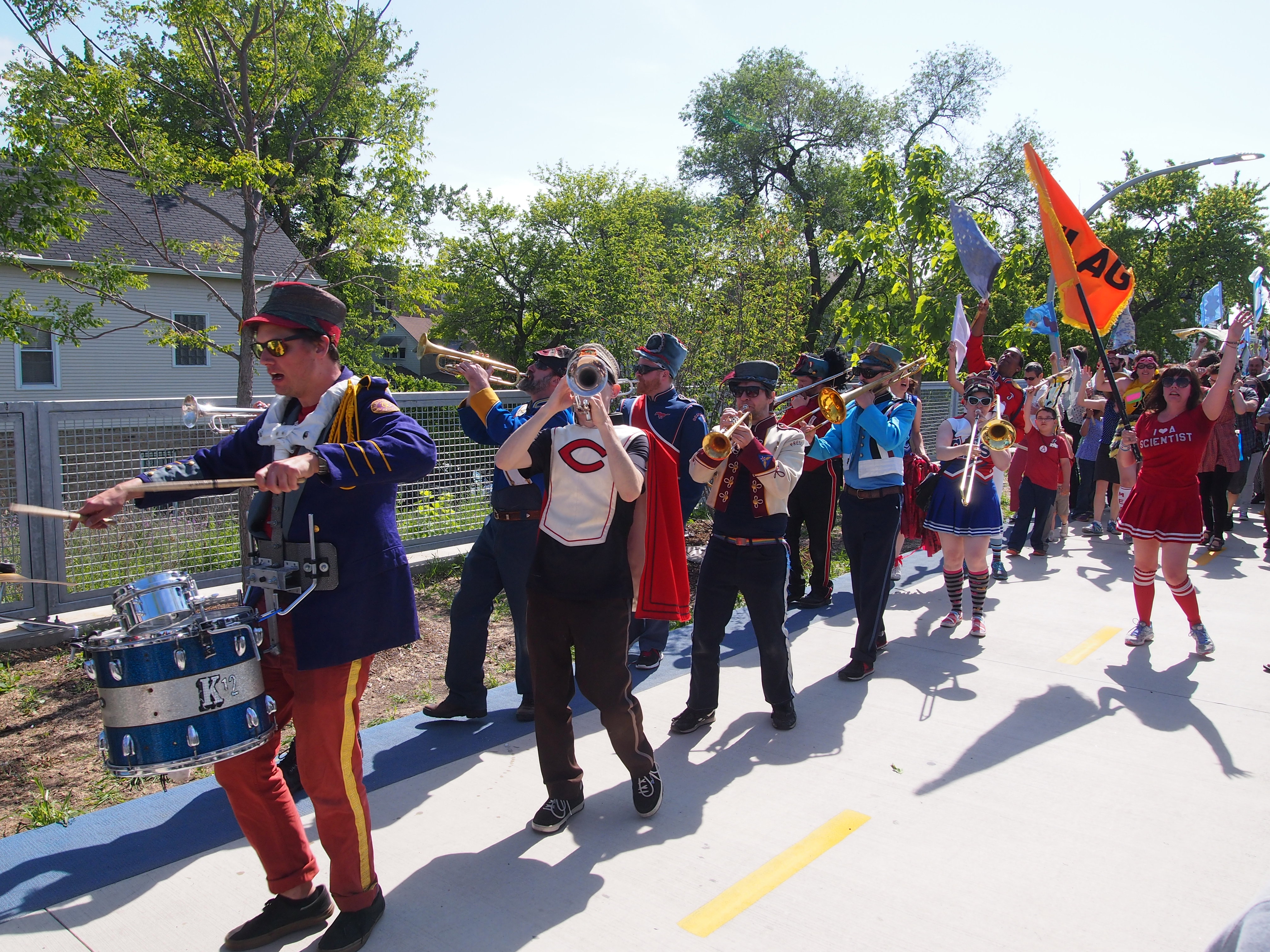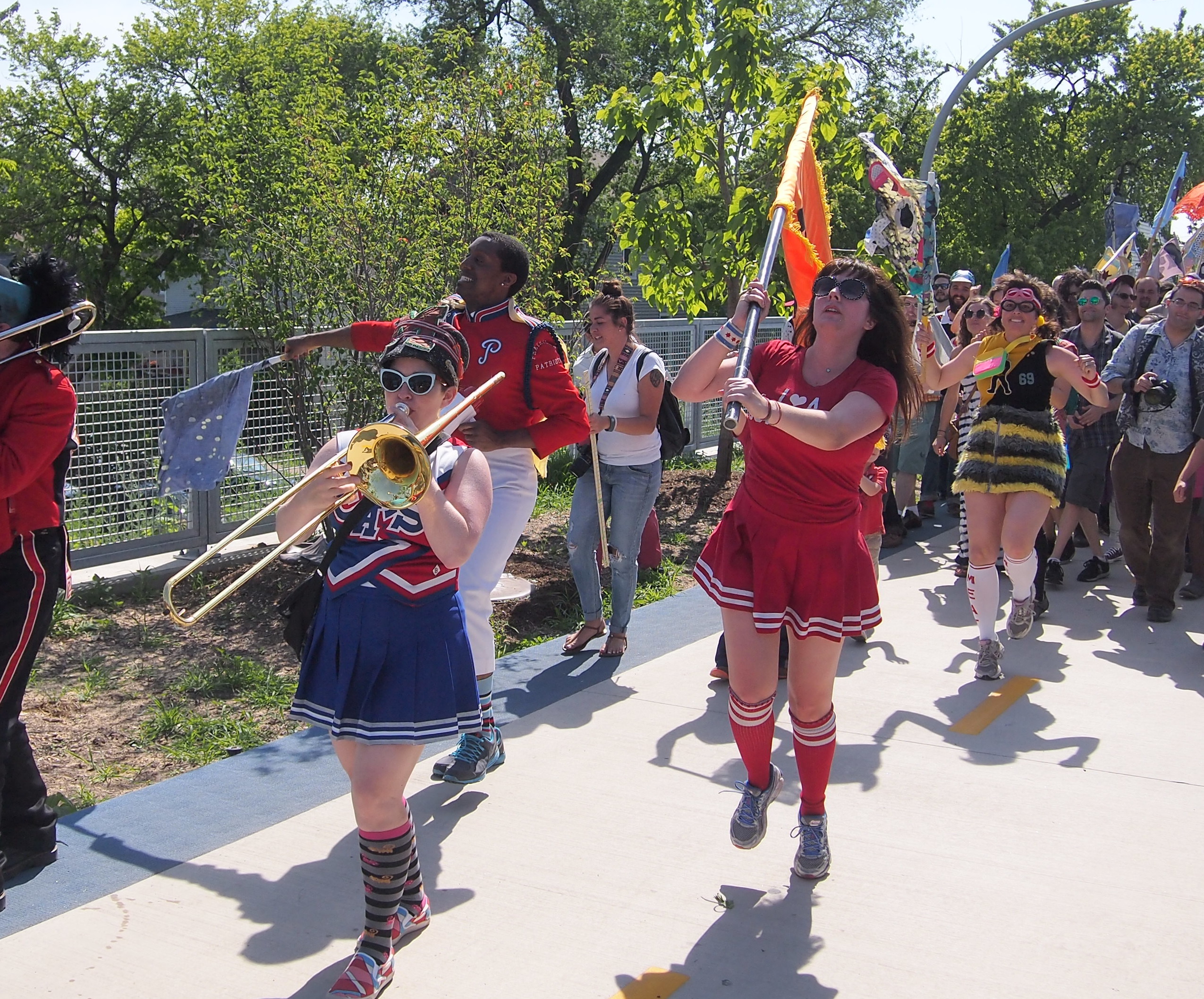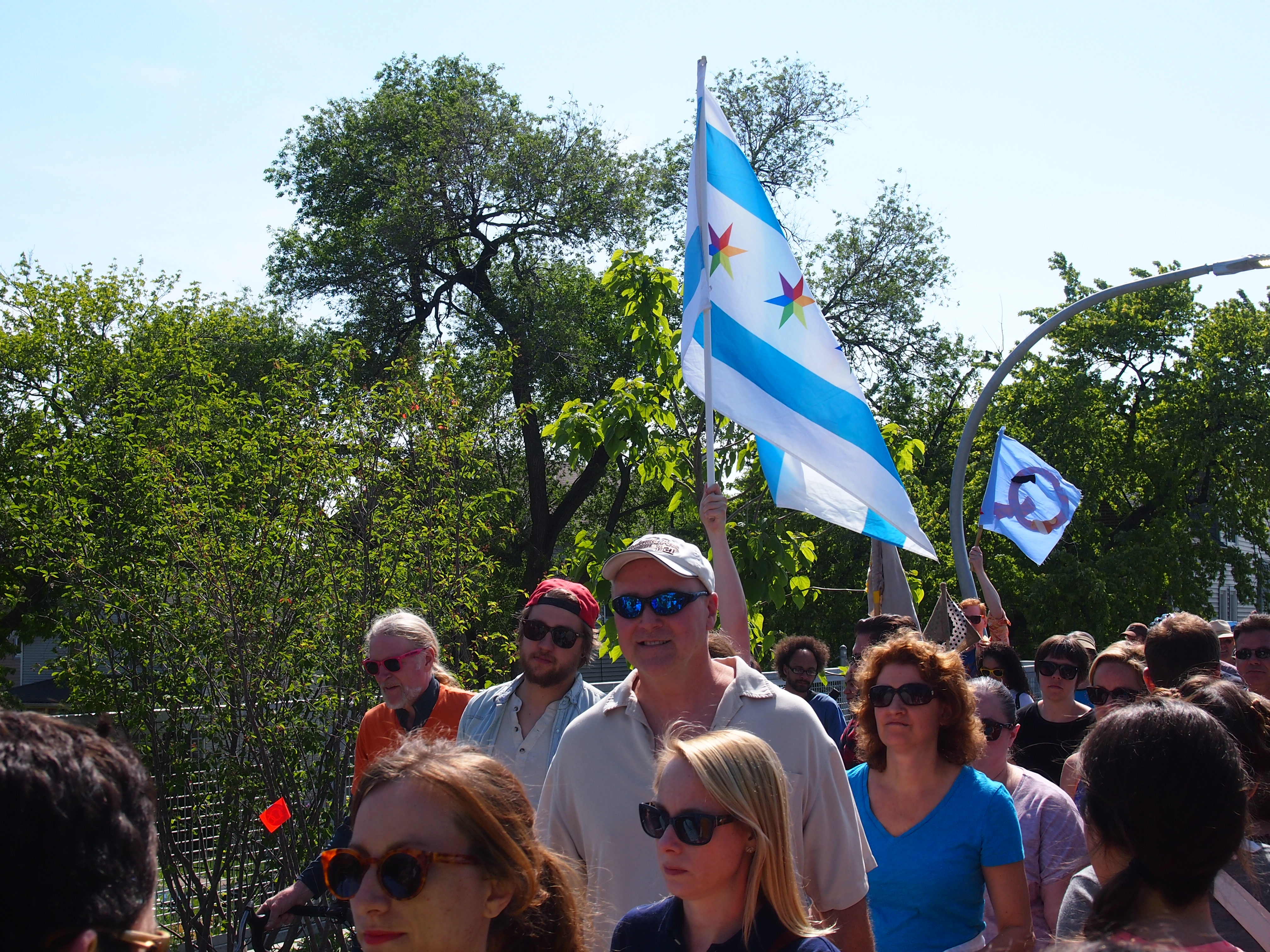This was one of my favorites on the Beverly walking tour on the Southwest Side of Chicago, 10340 S. Longwood Dr., also known as the Hilland A. Parker House.
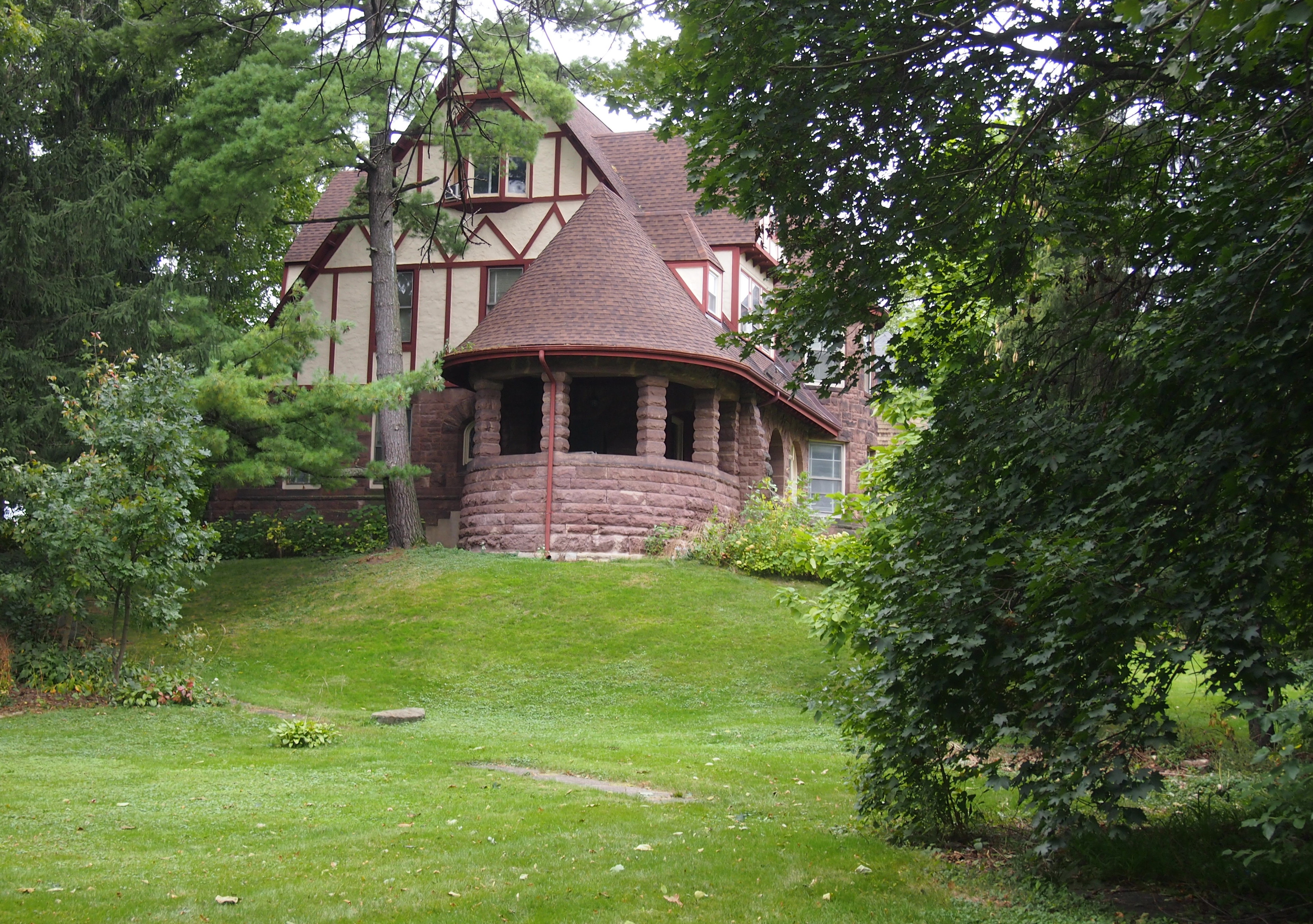 Note the enormous yard, sloping upward, which we were told continued quite a ways toward the back. The area was wide open when the house was built in 1894, so there was no reason to build on small lots. An architect named Harry Hale Waterman did the design. He did a fair number of houses in the neighborhood, but this one was for himself.
Note the enormous yard, sloping upward, which we were told continued quite a ways toward the back. The area was wide open when the house was built in 1894, so there was no reason to build on small lots. An architect named Harry Hale Waterman did the design. He did a fair number of houses in the neighborhood, but this one was for himself.
The AIA Guide to Chicago says: “Site and style combine here for high drama. The base of the huge rusticate brownstone blocks rises on the hill to form huge arches on the big semicircular porch. The tall roof, pierced with steeply pitched gabled dormers, exaggerates the height.”
Not far away is this charmer by Walter Burley Griffith, the Harry N. Tolles House, 10561 S. Longwood, which was built in 1911, with some later additions, such as the glass bricks.
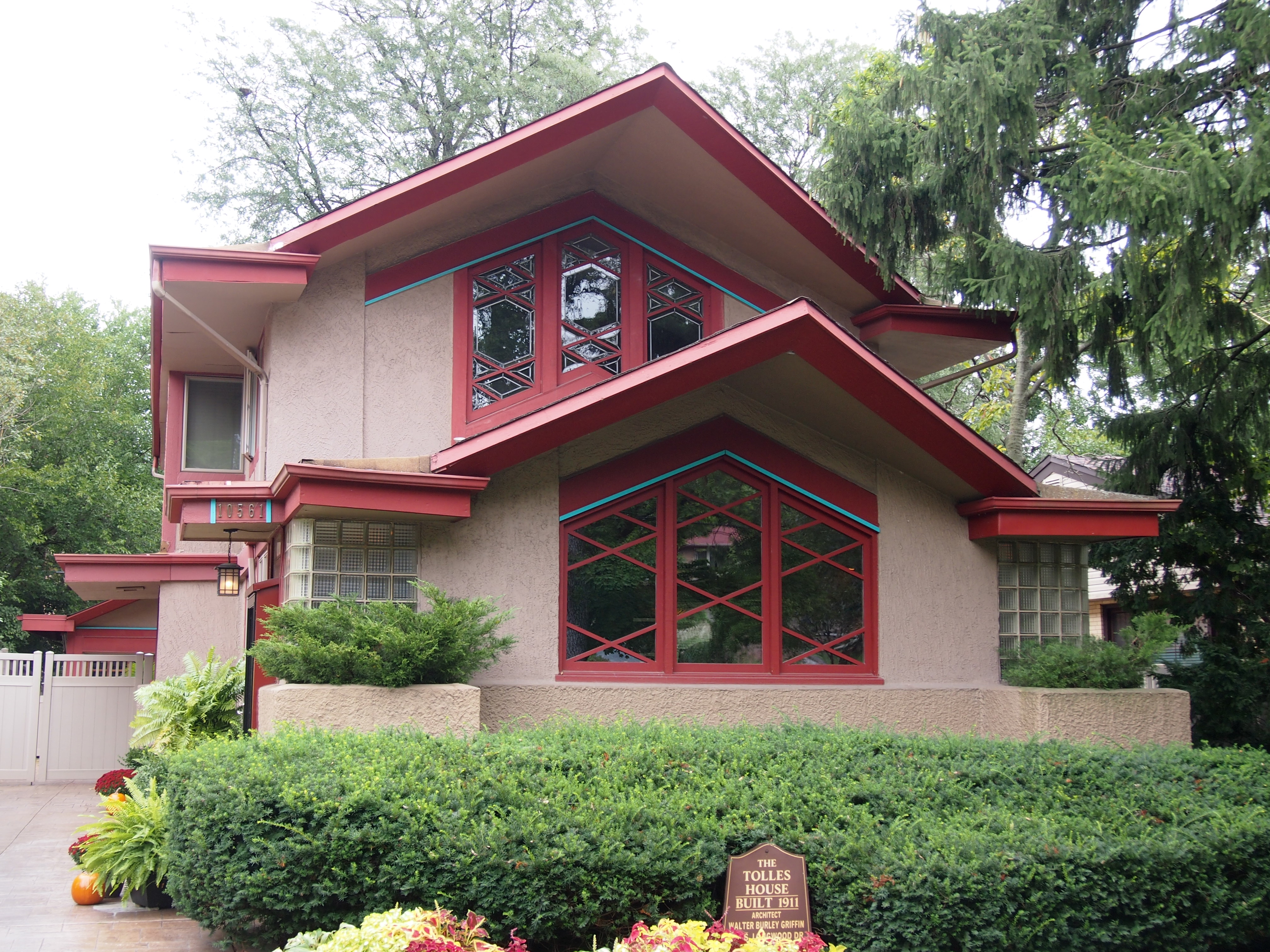 Good old Walter Burley. I learned about him when I visited his signal creation, the city of Canberra, during the warm Christmas season in ’91.
Good old Walter Burley. I learned about him when I visited his signal creation, the city of Canberra, during the warm Christmas season in ’91.
Before the Australians tapped him to build their capital, he “designed more than 130 designs in his Chicago office for buildings, urban plans and landscapes, half of which were built in Illinois, Iowa, Michigan and Wisconsin,” PBS says, in the years before WWI.
At 10616 S. Longwood: the house that’s now home to the Ridge Historical Society, dating from 1922 and designed by John Hetherington. Not this fellow, though.
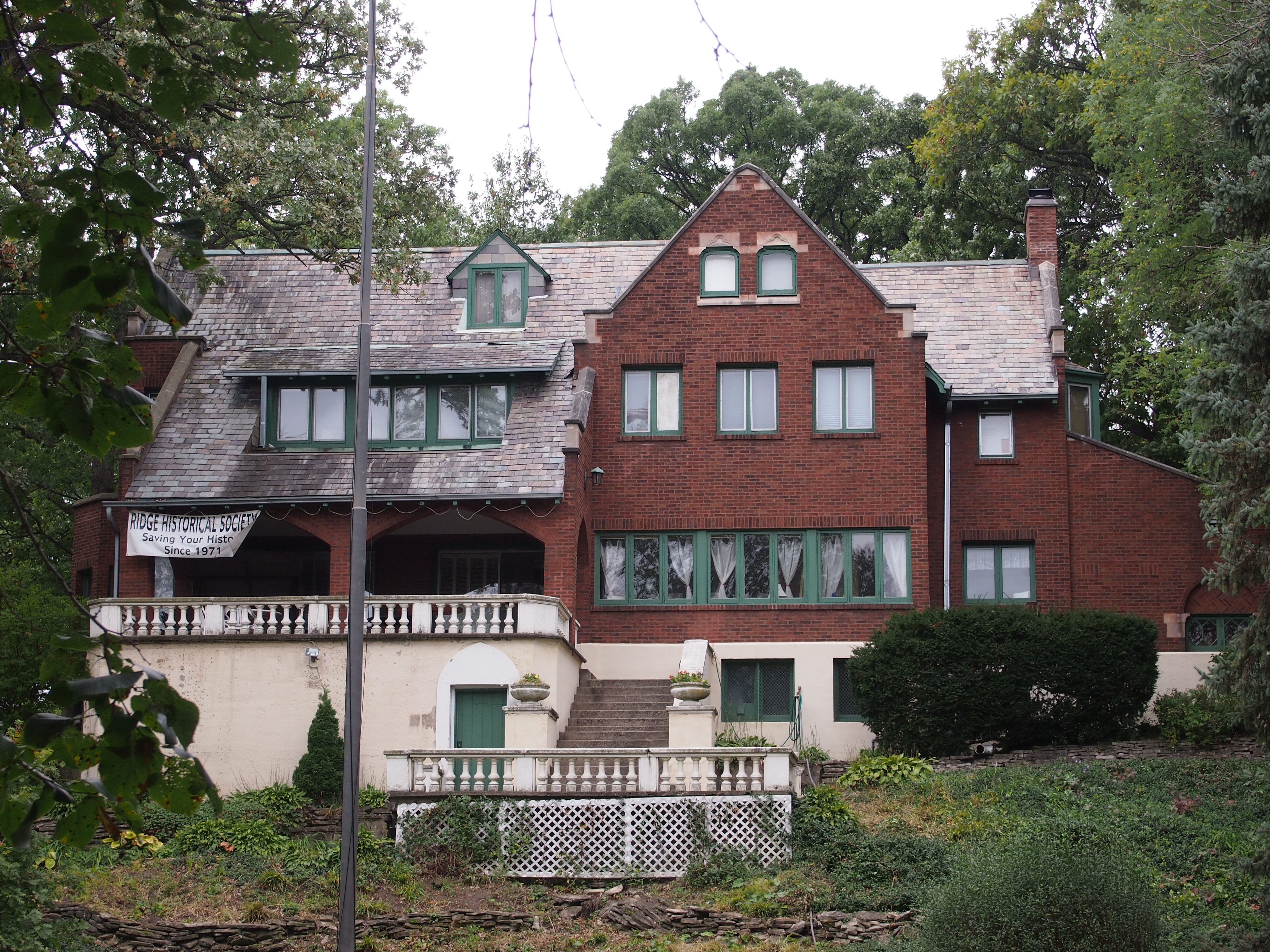 The organization calls it the Driscoll House on a sign in the front; the Graver-Discoll on a plaque around back; AIA calls it the Herbert S. Graver House. Hope no one has come to fisticuffs over the nomenclature. Graver, it seems, commissioned it, while Driscoll was the last owner before the historical society. More about it here.
The organization calls it the Driscoll House on a sign in the front; the Graver-Discoll on a plaque around back; AIA calls it the Herbert S. Graver House. Hope no one has come to fisticuffs over the nomenclature. Graver, it seems, commissioned it, while Driscoll was the last owner before the historical society. More about it here.
The oldest house on the tour was the Chambers House, 10330 S. Seeley, dating from 1874 and designed by that prolific architect of previous eras, Unknown (who also did the Irish castle mentioned yesterday).
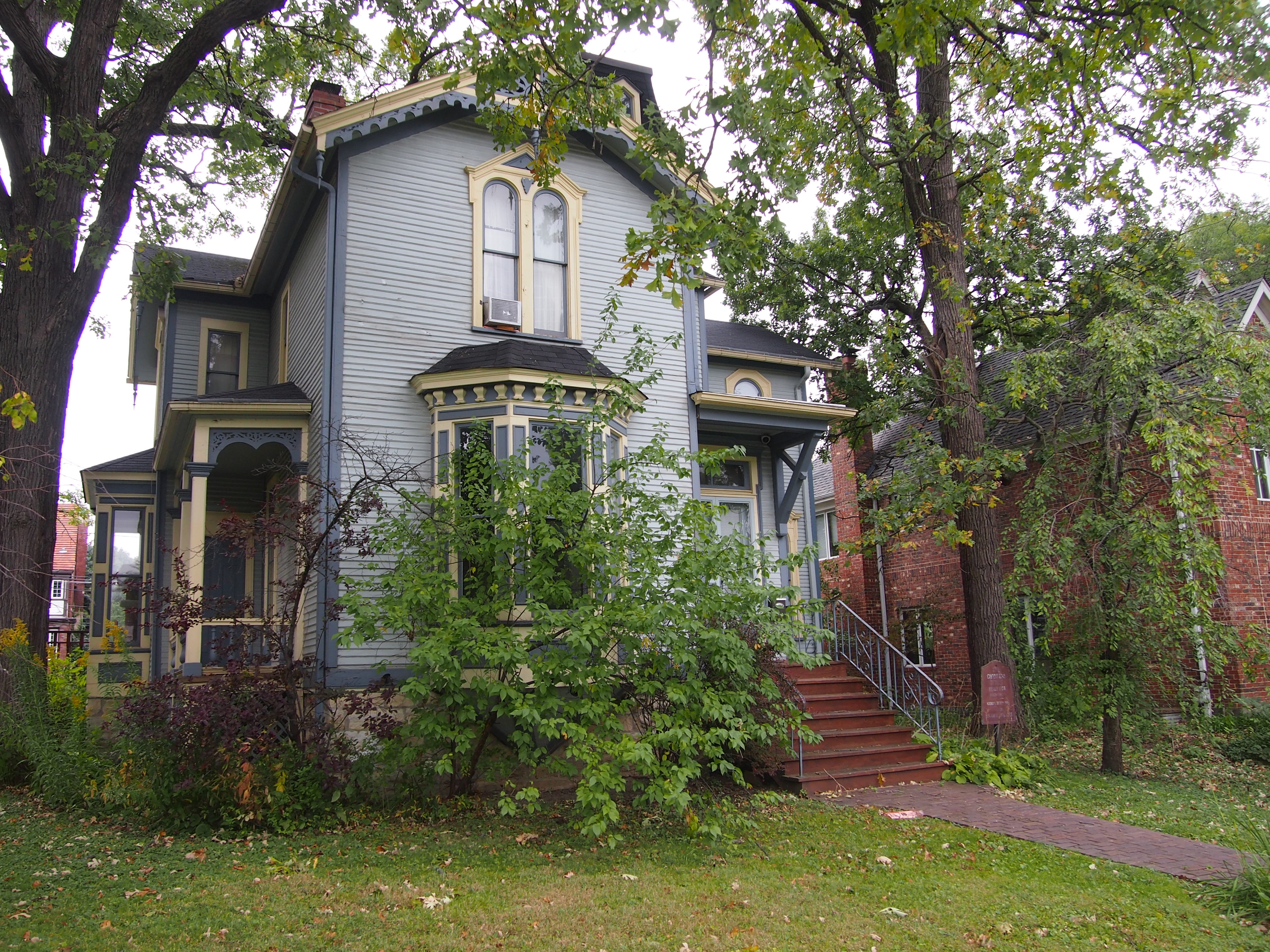 AIA says: “The remarkably well-preserved house [indeed] is a classic suburban villa, complete with ‘French’ tower.” Maybe a French tower is a vantage from which to taunt passing Britons clapping coconut shells.
AIA says: “The remarkably well-preserved house [indeed] is a classic suburban villa, complete with ‘French’ tower.” Maybe a French tower is a vantage from which to taunt passing Britons clapping coconut shells.
